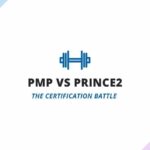
Photo by Andrea Piacquadio
In the digital age, cold outreach strategies have been replaced with email campaigns. However, despite the efficiency that technology has provided, consumers still seldom interact with their received emails, with most of them left unread. So, how do you make your company emails stand out from the rest of the inbox pile? You can boost your email response rate with some tips.
8 Tips to Boosting the Response Rate
Any company specializing in online marketing in Toronto will tell you that increasing your online customer engagement is not easy. However, there is no need to worry because you can turn it around with these helpful tips:
- Be Realistic With Response Rate
Sending cold emails to all your potential clients won’t necessarily result in a positive response. Realistically, when you send a hundred emails, only one person is likely to respond, which means the average response rate for cold email outreach is 1%.
The percentage for the opened emails on the other hand is a positive 45.5%, which gives you the chance to increase your response rate by improving your email approach.
You can fine-tune the pitch template that proves to be the most engaging with your clients. Email verification tools are also available for you to ensure that your cold emails reach the targeted audience.
- Work on Your Subject Lines

Photo by Pixabay
Email subject lines are the first things that your clients read. It’s a simple phrase or word that encapsulates the essence of your content. In just a few words, you should be able to communicate your genuine intentions in helping them. A good subject line should be direct, memorable, and engaging.
It can be stated as a question, tutorial, checklist, or friendly reminder. As long as it’s phrased in a helpful, friendly, and straightforward manner it’ll surely catch their attention. Don’t beat around the bush or cover it with complicated metaphors. Instead, discuss the topic right away and deliver the help you’ve promised.
- Incorporate Multimedia Files
Emails offer unprecedented efficiency in terms of reaching out to your clients first. However, as social beings, humans tend to rely on nonverbal cues to gauge their trust in another person. This factor can be a hard challenge to overcome for cold emails that rely heavily on text but that is where multimedia formats come in.
By using videos, images, audio recordings, and posters, you’ll be able to better visualize complex content to customers. It also possesses great versatility when it comes to the type of videos you want to attach be it interactive, vlogs, informative, and short films.
- Be Upfront About Helping Customers
Customers often get annoyed by most cold outreach campaigns, because they know that you’re just there to sell something. Of course, that fact is true, but being too upfront about your goal might come off as disingenuous. Instead, try to start the email with the sincere intent of helping your customers. Talk about their needs and focus on their demands.
After that, you can then gradually introduce solutions that your services offer to their problems. So, if you’re trying to advertise a service like dog walking in Etobicoke, highlight first your customer’s dog-sitting needs, which can segue to your rates and prices. You can even offer them discounts, through the sent email, to encourage engagement.
- Avoid Clickbait
Using clickbait as your main advertising technique is not appreciated by clients. It can come off as deceptive and manipulative as you mislead them into opening your email. Some may even recognize the clickbait format and just designate your emails to spam. So, next time you write a subject line or write your content intros and letters, be direct and sincere.
If you want to pull off a stunt or gain traction, try collaborating with influencers and prominent companies. Using their popularity and authority, you can then proceed to name-drop them to increase your company’s credibility.
- Send a Follow-Up

Photo by Gustavo Fring
Most marketers and experts from any Vancouver SEO agency will advise to never forget to send a follow-up email. With the busy schedules of your customers, they may forget to check their inbox, so it’s just logical to leave a reminder.
This may sound redundant and counterintuitive because it may annoy some clients and seem too pushy. However, remember that persistence is the key. Create a follow-up template for every email outreach campaign, because these simple follow-ups show your customers the dedication of your company.
- Utilize Negative Marketing
A negative marketing approach is not a common advertising technique. With most email outreach campaigns focusing on affirmative responses and positive scenarios, using the former can make you stand out from the rest of the pile. So, what is negative marketing? Well, it’s a campaign that highlights the problems of your customers if they don’t hire you.
Brands like Coca-Cola once leaned into this with their thirst-quenching commercial back in 1990 with Matt LeBlanc. You can use the same technique by using subject lines that focus on customer dilemmas and burdens.
- Support Facts With Statistics
Sometimes, words are just not enough to convince your clients. Blocks of text and a plethora of jargon can alienate them from your content. Instead of merely presenting blocks of text, why not make it more understandable with graphs and statistics.
By using percentages and statistics, your content will be more grounded to the real world and seem more tangible. However, going overboard with these stats may overwhelm some readers so try to use it only when they’re needed.
A bonus tip: Recent survey shows that the best days to send your emails to clients are Tuesdays, Thursdays, and Wednesdays. These are the days of highest email engagement with the best time slots at 8 AM, 1 PM, and 4 PM.
Final Thoughts
Email outreach is an efficient and effective way to connect with your customers. However, it has to be done in a well-formulated format to avoid antagonizing or annoying the receiver. Put yourself on the other side of the screen and imagine how you would react reading them. So, when you’re trying to write your next email campaign, try to remember these tips and use them well.


